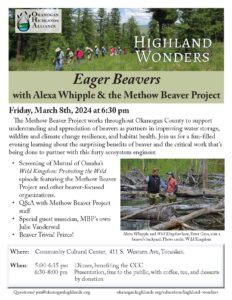Finding Gulo: Wolverines of the North Cascades with David Moskowitz
If you weren’t able to make it in person to this fantastic event, you can find a recording of it on OHA’s YouTube Channel! Click here to find it!

Podcast! All About Bears S3:E5
…with Bill Gaines, wildlife biologist and Executive Director of the Washington Conservation Science Institute.
Dr. Bill Gaines has been studying wildlife, including (and especially) bears – both black bears and inland grizzly bears – since the late 1980’s and, wow, has he had some adventures! In this episode, Dr. Gaines shares the experiences and understandings that have come about through his research studies on the ecology, habitat, and population of bears in the North Cascades over the last three decades.
This episode comes at an opportune time, as this summer (2023), the National Park Service and the US Fish and Wildlife Service is expected to release a Draft Environmental Impact Statement (DEIS) that includes a response to initial public comments and a range of options for how to proceed with an effort to restore a grizzly bear population to the North Cascades Ecosystem. This DEIS comes with an opportunity for the public to provide input. As always, OHA encourages the public to build their own understanding, and to participate in the public process by providing input to the decision makers when the opportunity arises. Here are some sources to find more information about the process and timeline of the grizzly bear restoration proposal in the North Cascades.
Friends of the North Cascades Grizzly Bear: https://www.northcascadesgrizzly.org/
National Park Service: 2022 North Cascades Ecosystem Grizzly Bear Restoration Plan/Environmental Impact Statement: https://parkplanning.nps.gov/projectHome.cfm?projectID=112008
US Fish & Wildlife Service: North Cascades Grizzly Bear Restoration EIS: https://www.fws.gov/project/north-cascades-grizzly-bear-restoration-eis
Dr. Bill Gaines is the Executive Director of Washington Conservation Science Institute. Learn more about him and his organization at: https://waconservationscience.com/
This podcast is produced by Okanogan Highlands Alliance. For more information or to support OHA, visit our website: okanoganhighlands.org
Find the Highland Wonders Podcast:
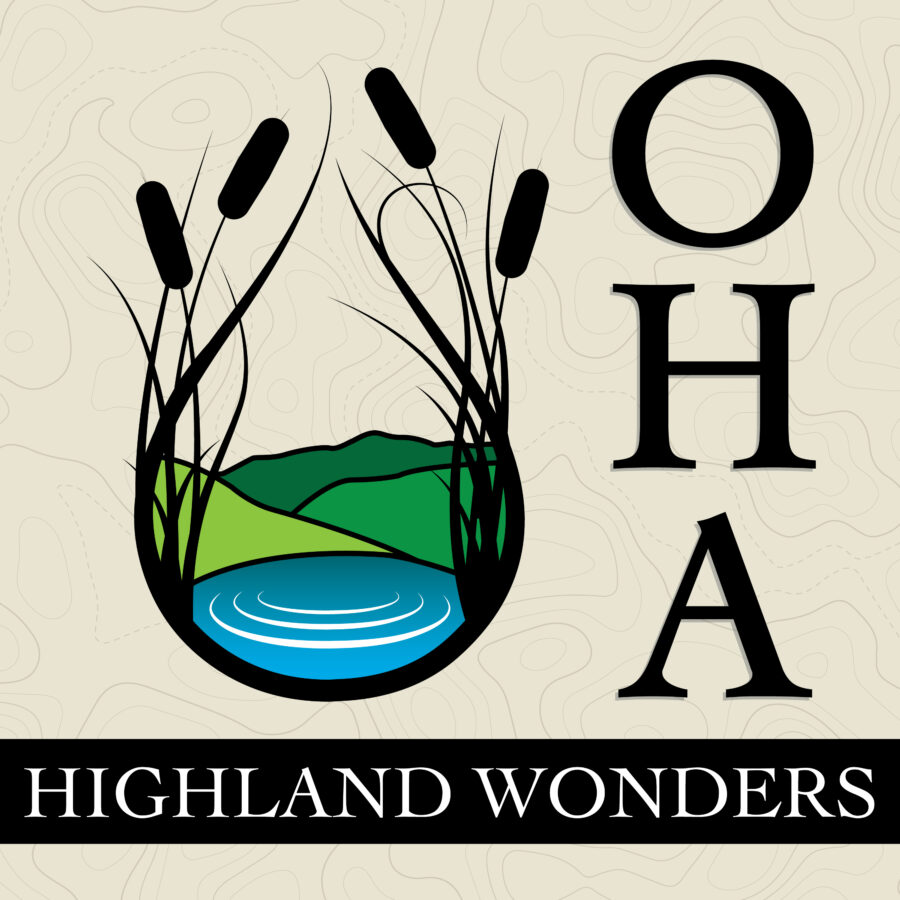
Podcast! Canada Lynx and Home Range Wildlife Research S3:E4
…with Anna Machowicz, Education Director
Join us for a refreshingly fun episode, full of natural history, scientific research, and the developing story of Home Range Wildlife Research, whose mission is “to advance wildlife conservation by conducting high-quality research, educating aspiring biologists, and engaging local communities.” Anna Machowicz, Home Range Education Director, shares exciting news about field training and volunteer opportunities, and explains how Home Range has begun implementation of a long-term study of Canada Lynx populations in the mountains between the Methow and Okanogan – an area that has been significantly altered by two decades of megafires. In all that they do, Home Range invites community volunteers, students, and academics to participate, leading collaborative investigations of wildlife and working to understand how communities and land managers can support wildlife populations and healthy ecosystems into the future. Check out their website: https://www.homerange.org/home for more information, and to sign up for training and volunteer opportunities!
For additional information, check out this recent article about Home Range in the Seattle Times:
This podcast is produced by Okanogan Highlands Alliance. For more information or to support OHA, visit our website: okanoganhighlands.org
Find the Highland Wonders Podcast:

Podcast! Beaver Believers: The Next Generation (Part 1)
with Sarah Koenigsberg of Tensegrity Productions
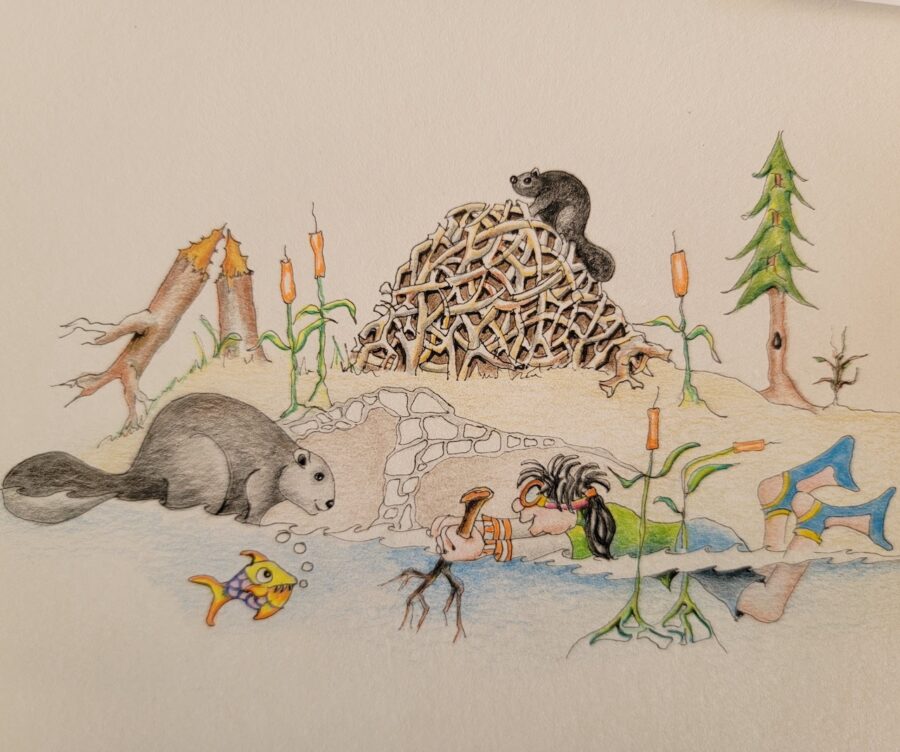
This special episode features many voices! The Tonasket Elementary School 5th Grade teamed up with OHA and Sarah Koenigsberg, who is an award-winning film-maker, educator, and, most importantly, beaver believer, to answer students’ questions about beavers and how they protect water quality, water quantity and healthy wetlands throughout the West. Before you listen, here is a story from Anna, Nature Detective!
Season 2 of the Highland Wonders Podcast is supported by Humanities Washington and the National Endowment for the Humanities.
Anna, Nature Detective
Season 2, Episode 5: Beaver Believers, The Next Generation
Anna is a daring and precocious nature detective. She loves to sing and dance, and make up songs and dances about the things that she observes. Anna LOVES animals (especially the fuzzy ones), and she is the kid who can catch the cat that no one else can. When Anna explores she likes to look at things close up, touch them, peer at them through her Nature Detective hand lens. Sometimes, things that can’t run away suit Anna’s detective style best, but fortunately Anna is also very careful not to hurt anything, and to keep her distance when she comes across wildlife.
One spring day, Anna wakes up singing, “I like oceans and rivers, I like oceans and rivers, and everything that is wet. Even though, I been trying to go, on a mountain road, I can’t stand it. You’re. So. Cute.” Her dad laughs, “What are you singing about, Anna?” Anna looks at her dad sideways, and says “Beavers, dad! Of course.” It is very obvious to Anna. What else could she possibly be singing about?
Her dad nods his head seriously, remembering the beaver lodge they had seen last summer in the Okanogan Highlands. It’s a beautiful day, the sun is warm, the snow is nearly melted, so they decide to go pay the beavers a visit. Up they go, following that long mountain road to their favorite lake, where they set up a picnic, test the still- frigid water, and watch the birds busily flitting from tree to tree, some building nests. At the end of the day, as the light begins to fade, Anna and her family peer through their binoculars toward the rounded mass of tree branches along the distant side of the lake, and suddenly they see it! A little head, swiftly moving through the water toward the lodge!
Anna’s questions begin.
“Where is that beaver coming from?”
“Was that beaver swimming underwater?”
“Can beavers breathe under water?”
“How many beavers live in that beaver house?”
“How big are beaver babies?”
“What do beavers eat?”
“Are beavers nice?”
“Can I see a beaver close up?”
“How do beavers survive in the winter?”
“How do beavers build those dams?”
The questions go on and on, literally without stopping, for minutes. This beaver has sparked our Nature Detective’s curiosity! Luckily, she is not alone. Recently, the Tonasket Elementary School 5th Grade teamed up with Sarah Koenigsberg, beaver believer, educator and storyteller extraordinaire, to answer many of these same questions!
Join Sarah and the next generation of beaver believers to learn all about beavers, their important role in our highlands ecosystems, and more by listening to the most recent episode of Okanogan Highlands Alliance’s Highland Wonders Podcast. You can find additional episodes and more nature detective stories at okanoganhighlands.org/education/highland-wonders/ or on Apple Podcasts, Google Podcasts, Spotify, or wherever you find your podcasts.
Podcast! From the Okanogan to the Sea S2:E2
with Lynda Mapes of The Seattle Times
In this interview-style episode, Lynda Mapes of The Seattle Times joins OHA in discussing her newest book, Orcas: Shared Waters, Shared Home. From Tonasket to the Salish Sea, our ecosystems are connected by the water and the wildlife that travels through our region. Learn about salmon, orcas, and the people whose lives revolve around the aquatic habitats of Washington on Spotify, Apple Podcasts, Google Podcasts or wherever you normally listen!
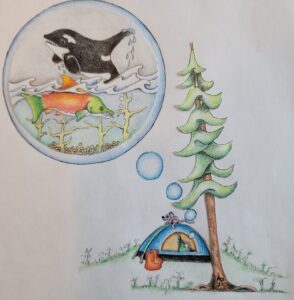
Anna, Nature Detective, dreaming of the rivers that connect with the sea. Illustration by Diana Weddle
Anna surfaces briefly, then glides back underwater, swimming against the current. It is a fast current, and the cold, clear water feels just right against her red sides, her glinting scales. She is headed upstream, back to the place she was born.
As she makes her way upstream, away from the ocean, she is thinks back to the last time she was in fresh water. Anna barely remembers that trip downstream four years ago, she was so small! As she swam from the river to the sea, the waters gradually got saltier. She knew she had arrived in the sea because the water moved differently – in and out and in swirls, pushing every which-way. She had to get used to that salt, the currents, and the new animals and plants she swam past, and there was no time to dilly dally.
There was lots of food to eat in the sea, but there were also lots of creatures that wanted to eat Anna and her salmon friends! She found her way out to the deep water, where she could hide from the big barking sea lions and the huge bald eagles that pounced from above. Anna snacked on whatever came along – fish, water bugs, anything, really. Out in the deep water, Anna felt a little safer – she could swim fast and deep and she could swerve like a champ! Black and white orcas were everywhere. They were there in the deep water, they were there in the shallow water, they were close to land and out in the open sea. Always on the prowl, the orcas were fast and somehow knew right where the salmon were, even in the dark. As time passed, Anna got bigger and faster and smarter.
One day something told her it was time to head for home, back through the shallow sea to the river mouth, where that fresh water smelled so familiar…
Anna woke with a start. “Mom, I dreamed I was a fish! A salmon! And I was four years old, just like me, but I was really OLD. There were rivers in my dream, and the ocean, and other fish, and sea lions, and orcas! Can we go to the ocean?” Anna’s mom said, “wow, what an exciting dream! You know what we should do? We should go down to the river – I bet we can see salmon in the Okanogan River right now!” “Yeah, let’s do it!” Anna yells.
As Anna and her mom watched the big salmon holding their position in the river’s current, they thought about the lives of these big fish and the cycle of life for the salmon and all of the people and wildlife that depend on them, like the orcas in Anna’s dream. Soon, these surviving big fish would lay their eggs and then die, but even then they are a part of the system, their bodies nourishing the plants and animals that live in and around the rivers. How amazing is that? Anna announces, “I love salmon. I want to learn all about them and I want to be their friend.”
To learn more about salmon, orcas and the rivers that connect them, check out the new Highland Wonders Podcast episode: From the Okanogan to the Sea, featuring a discussion with Lynda Mapes about her new book, Orcas: Shared Waters, Shared Home, co-published with the Seattle Times.
Season 2 of the Highland Wonders Podcast is supported by Humanities Washington and the National Endowment for the Humanities.
Additional Resources:
Learn More:
Read the Book! Orca: Shared Waters, Shared Home by Lynda Mapes
Find an Exhibit! Seattle Aquarium: seattleaquarium.org/exhibits/Orca-shared-waters-shared-home
Learn Even More:
Okanogan River Sockeye: https://animalbiotelemetry.biomedcentral.com/articles/10.1186/s40317-021-00262-y
Okanogan River Spring Chinook: https://www.fisheries.noaa.gov/west-coast/endangered-species-conservation/upper-columbia-river-spring-run-chinook-salmon
Fish Water Management Tool: douglaspud.org/about-us/district-videos/
Colville Tribes: colvilletribes.maps.arcgis.com/apps/MapJournal/index.html?appid=ac4721130e424df786eb06dbbb4a5880
Take Action to Protect Land and Water:
Okanogan Highlands Alliance: okanoganhighlands.org
Okanogan Conservation District: okanogancd.org/
Note: There are many local organizations to help landowners protect and restore their land and water – Google Search is your friend!
Write to Your Senator:
Senator Patty Murray
154 Russell Senate Office Building
Washington DC 20510
Senator Maria Cantwell
511 Hart Senate Office Building
Washington DC 20510
Or find your senator’s contact information: https://www.senate.gov/senators/senators-contact.htm
Moose In Washington: Living on the Edge
…with Carrie Lowe of the Washington Department of Fish and Wildlife
Friday, September 24, 2021 at 7:15pm at the Tonasket Elementary School Parking Lot
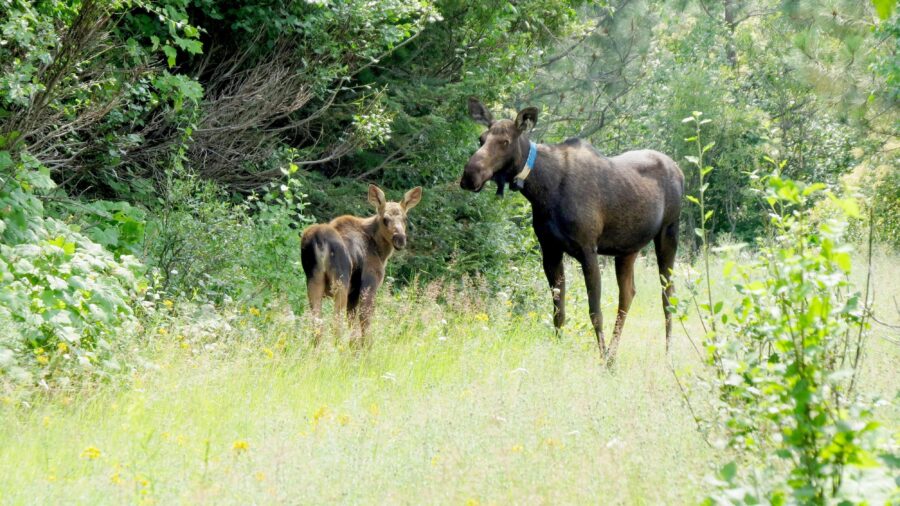
Moose: they live alongside us, from the valley floor to the highlands, and despite their enormous size, are only rarely seen. Join Carrie Lowe, wildlife biologist with Washington Department of Fish and Wildlife to learn about the life history, population trends and challenges facing moose in our area.
Carrie Lowe works with game and nongame species in Spokane, Lincoln, and Whitman Counties. Prior to coming to Washington in 2013, Carrie spent time teaching at an outdoor science school in North Carolina, and worked on a variety of research projects, including loggerhead sea turtles in Georgia, mesocarnivores in the Sierra Nevada, black bears in Louisiana, grizzly bears in Montana, and bighorn sheep in Hells Canyon. She received her Bachelor’s degree in Biology from Hope College in her hometown of Holland, MI and her M.S. in Wildlife & Fisheries Science from the University of Tennessee, Knoxville.
Join OHA in a unique, free community event – enjoy Carrie’s engaging in-person talk from a blanket, a camp chair or your vehicle, listen through your FM radio!
Questions? jen@okanoganhighlands.org
COVID Precautions will be in place: social distancing, individually wrapped desserts available by donation
Podcast! The Secret Life of Bats, Highland Wonders S1:E4
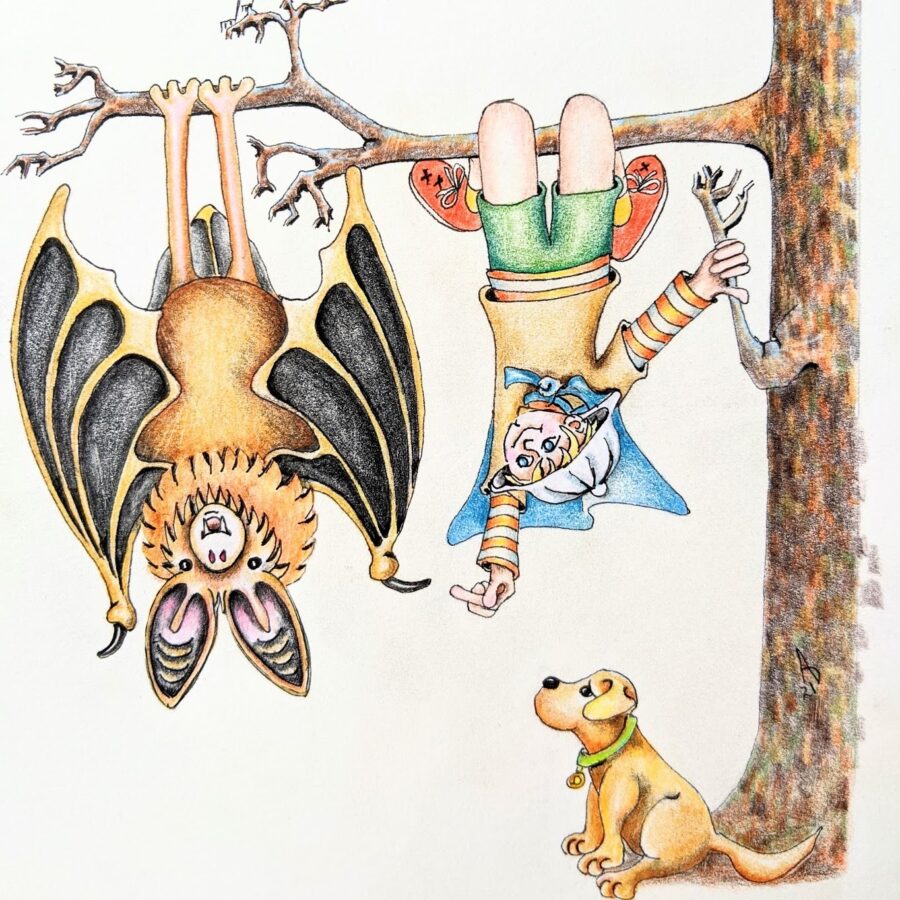
How do you feel when someone starts talking about bats? Warm and fuzzy? Uneasy? Disgusted? Cautiously curious? In the fourth episode of the Highland Wonders Podcast, The Secret Life of Bats, Roger Christophersen of the North Cascades National Park addresses our ideas about bats, and sparks a sense of wonder at these flying, fuzzy, leathery insectivores. To learn more about bats, how and where they live, and how we all can support bat populations (and why we should), check out the Highland Wonders Podcast wherever you normally get your podcasts! And now, a story from our intrepid Nature Detective. Enjoy!
Jack, Nature Detective: season 1, episode 4: The Secret Life of Bats
Jack’s family is enjoying a weekend camping in the highlands, escaping the heat of summer for a few days, and exploring the forests and lakes of the Okanogan. As they sit around the campfire, they notice something winging through the air in the little clearing, fluttering here and there. It’s flight pattern seems different from a bird, and the creature itself is bigger than the insects that Jack normally sees. “Eek! It’s a bat!” Jack’s mom exclaims. Jack gazes into the fire, thinking.
“What are bats, anyway?” Jack thinks about what he knows about bats, trying to sort them into a group with other animals he knows. Recently, he had a chance to get a close-up look at a bat during the day, as it clung to his house, sleeping. It was definitely fuzzy, with a pointy little snout.
“I don’t think they are birds because they don’t lay eggs. If they DID lay eggs, how would that even work? They hang upside down, and don’t have nests. The eggs would just crack on the ground! That would be bad.”
“Are they insects? Some insects are furry, like bumble bees. Maybe bats are insects?” Jack is not sure. He thinks, “Bees and other bugs don’t take very good care of their babies. But I heard that bat moms carry their babies around and feed them.” Jack glances over at his mom, who is giving his little sister a piggy back over to their tent. “Maybe bats are more like people. Mammals. Mammals?!? FLYING MAMMALS?!?! Is that possible?”
When they get home, Jack asks his mom to look up pictures of bats on the internet. One image of a bat skeleton pops up and Jack notices that the wing looks a lot like a hand – it even has a little thumb! He also notices their ears, “My what big ears you have, little bat!” Jack cackles at his own Little Red Riding Hood reference. So far, the evidence points to bats being mammals. But Jack still has a lot of questions. “Do bats have predators? Why do bats have big ears? Do they hibernate in the winter or go south like birds do? How high can they fly? I can’t wait to learn more!” Luckily, Roger Chistophersen, of the North Cascades National Park has the answers to some of Jack’s questions in the most recent, very fascinating, Highland Wonders Podcast!
Stay tuned! Jack will continue to solve nature mysteries on topics related to upcoming episodes of the Highland Wonders Podcast. Episodes and stories can be found at: okanoganhighlands.org/education/highland-wonders/ or on Apple Podcasts, Google Podcasts, Spotify, or wherever you find your podcasts.
The Backstory on Jack:
Meet Jack, Nature Detective: Jack is inquisitive, skeptical, creative, quirky, determined, and a friend to ALL critters. His observations of subtle clues and brilliant reasoning make him, quite possibly, one of the world’s most talented nature detectives. Like most of us, Jack’s understanding of the world comes from his own life experiences. He is five years old, and his investigative skills are top notch. If you were to stop by his house you might find our Nature Detective in the midst of an experiential study of squirrel movement, or determining the optimal shelter and food stores for his new pet grasshopper, named Grasshopper. Today, we will share a mystery that Jack uncovered in the Okanogan Highlands. What clues can you uncover in the story?
Podcast! Bighorn Sheep of the Okanogan, Highland Wonders S1:E3
OHA is delighted to ring in the new year with Episode 3 of the Highland Wonders Podcast: Bighorn Sheep of the Okanogan. In this hour-long episode, Jeff Heinlen of the Washington Department of Fish and Wildlife shares his fascinating expertise and entertaining stories of bighorn sheep, the history of the herds in our valley, and gives an update on how our local herds are currently doing. And now without further ado, a story from Jack, Nature Detective!
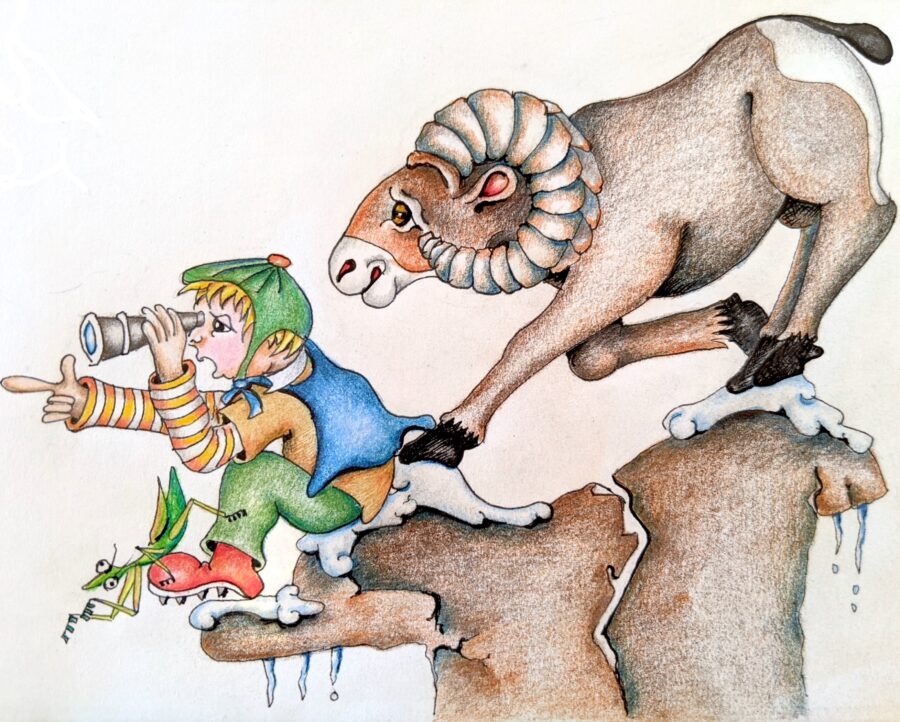
Jack, Nature Detective: season 1, episode 3: Bighorn Sheep of the Okanogan
Meet Jack, Nature Detective: Jack is inquisitive, skeptical, creative, quirky, determined, and a friend to ALL critters. His observations of subtle clues and brilliant reasoning make him, quite possibly, one of the world’s most talented nature detectives. Like most of us, Jack’s understanding of the world comes from his own life experiences. He is five years old, and his investigative skills are top notch. If you were to stop by his house you might find our Nature Detective in the midst of an experiential study of squirrel movement, or determining the optimal shelter and food stores for his new pet grasshopper, named Grasshopper. Today, we will share a mystery that Jack uncovered in the Okanogan Highlands. What clues can you uncover in the story?
“Hey dad, want to hear a riddle?” Without waiting for an answer, Jack recites, “What has a hard head, loves to climb and likes to lick salt?” His dad knows immediately: “Your sister.” “No!” Jack yells. “A wild great horn…” “…Owl?” his dad finishes for him. “No!” Jack yells again. “They have four legs, no wings, and huge, curly horns. We saw one on our hike today!”
Today Jack and his cousins adventured up the Whistler Canyon Trail near Oroville. After climbing the long, steep path, they stopped on a bench to catch their breath and look around. The kids brought their binoculars, so they scanned the hillsides and cliffs for signs of life – and there it was.
Silhouetted against the sky, high up on the edge of a cliff, an animal was standing very still. As Jack reported, it had four legs, a sturdy body, no wings, and a huge, curled head ornament. As they watched, the animal picked its way along the cliff, and the kids gasped to see it balancing so precariously on the rocks. “How does it not tip over? Its head looks so heavy!” Jack wondered out loud. “And how does it climb those rocks like that? I would fall!” As they watched, more animals “appeared” (they had been there the whole time but were so well camouflaged and so still that the kids hadn’t seen them). Some were laying down, others munching on something. Jack was curious why different animals had different size horns.
What was this amazing creature? Jack, the Nature Detective used his trusty process of elimination, “It can’t be a cat or a dog – they don’t have horns. It can’t be a goat – they are white, and live high in the mountains. Could it be a deer? Definitely not!” If there is one thing Jack knows, it is that: deer have antlers, sheep have horns.” Jack’s cousin, Fred adds, “Those have to be horns because antlers fall off, and those horns look like they have been growing for a loooong time.” The cousins decided that it must be a sheep! Elliot, who is a little older than the others, has seen signs along the road, warning drivers to watch out for “great horned…no, wait…bighorn sheep!” Jack, the Nature Detective is satisfied for now, but he is excited to listen to what Jeff Heinlen, from the Department of Fish and Wildlife, has to say about the bighorn sheep of Okanogan County. That should help him know for sure. Stay tuned! Jack will continue to solve nature mysteries on topics related to upcoming episodes of the Highland Wonders Podcast. Episodes and stories can be found at: okanoganhighlands.org/education/highland-wonders/ or on Apple Podcasts, Google Podcasts, Spotify, or wherever you find your podcasts.
The Beaver Believers: a feature documentary
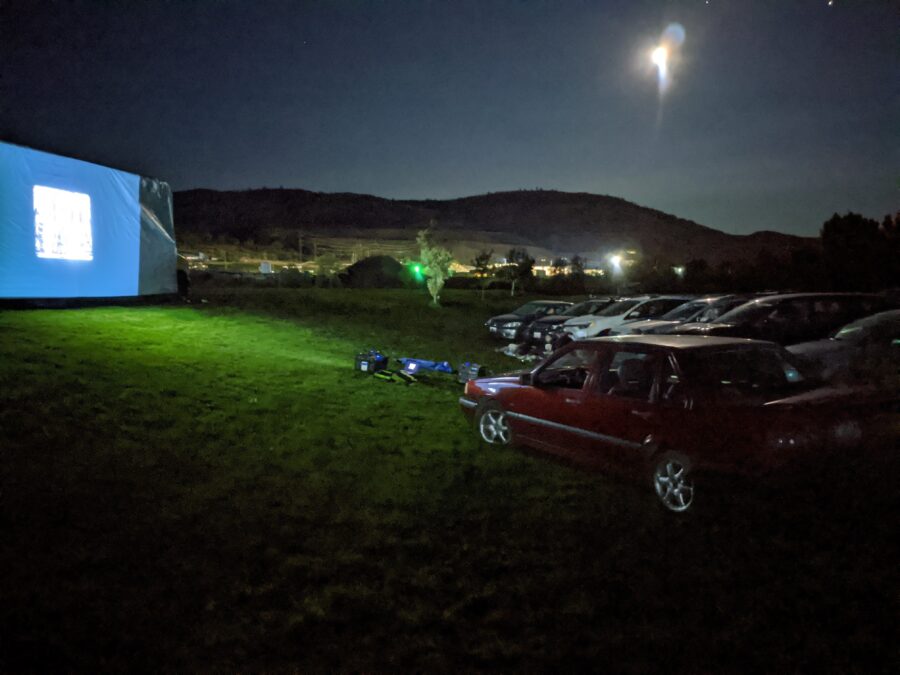
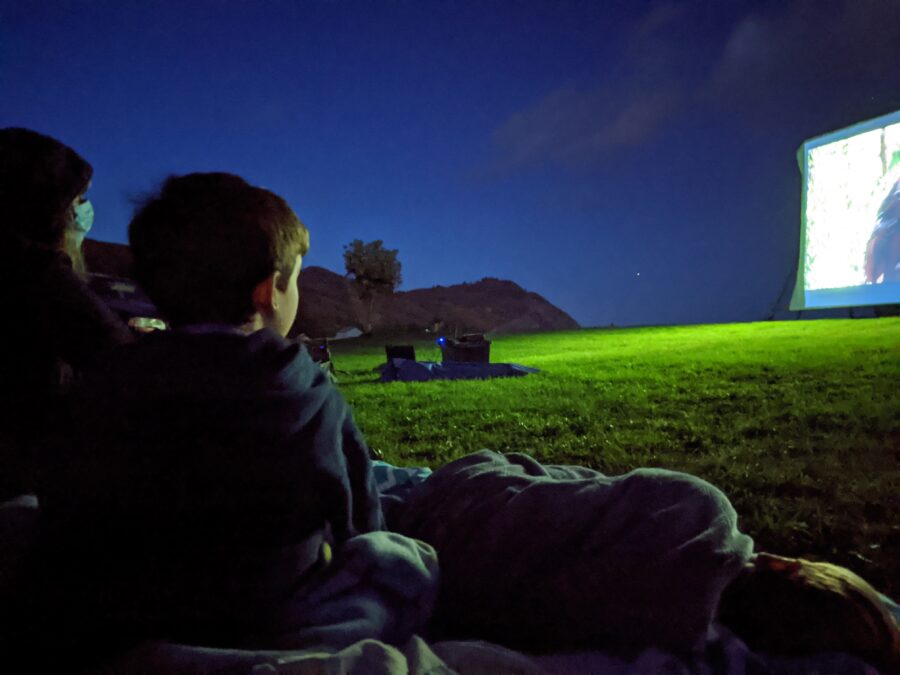
On Friday, September 25, OHA held a special edition of Highland Wonders – a drive-in movie screening of The Beaver Believers, a feature documentary. It was a clear, cool autumn evening with the moon hanging in the sky, and we were able to gather (while maintaining social distancing precautions) to watch this inspiring film. If you missed it, reach out to director Sarah Koenigsberg through her website, https://www.thebeaverbelievers.com/ to find out how you can see this fantastic film. You too, can be a beaver believer!
- 1
- 2
